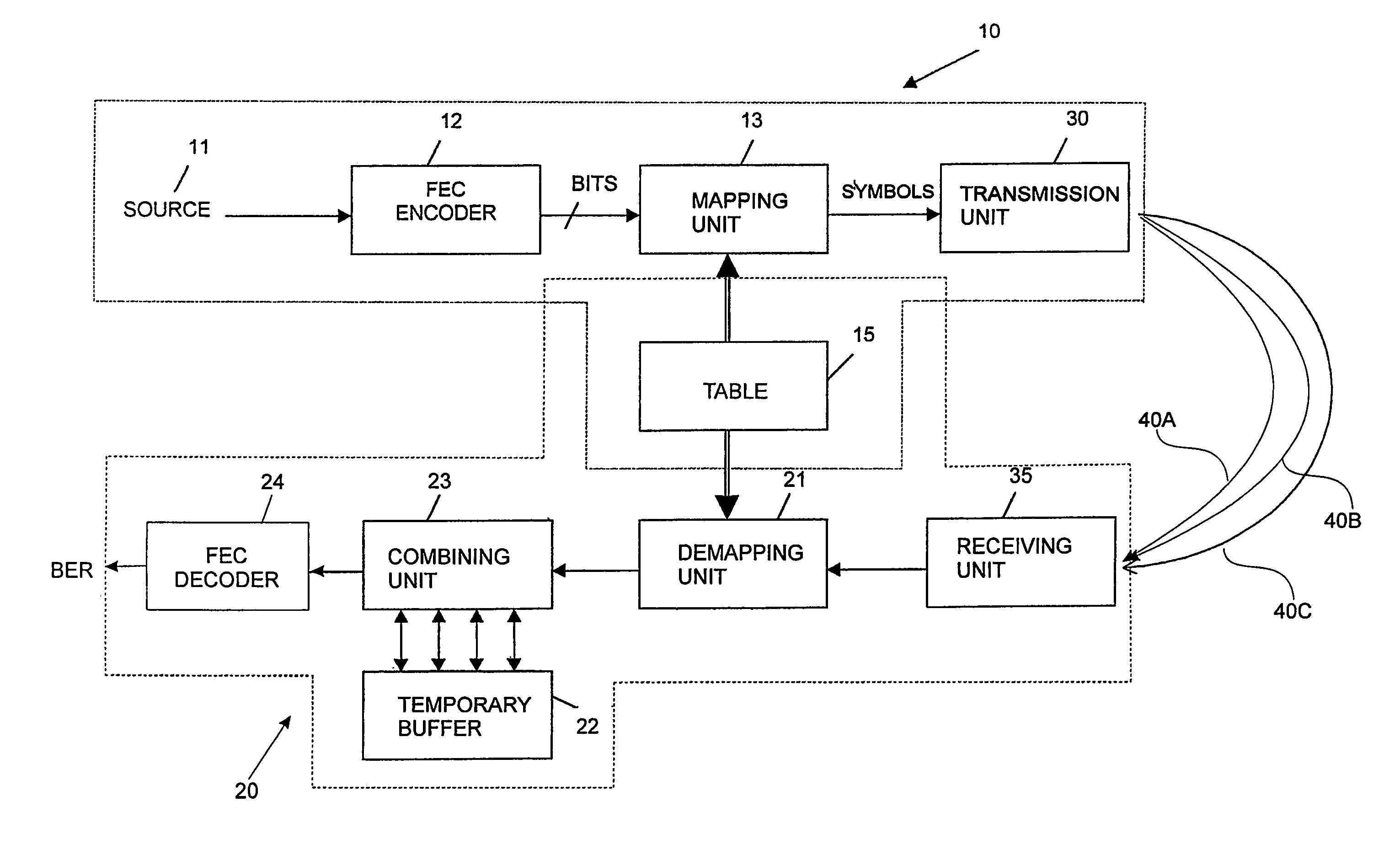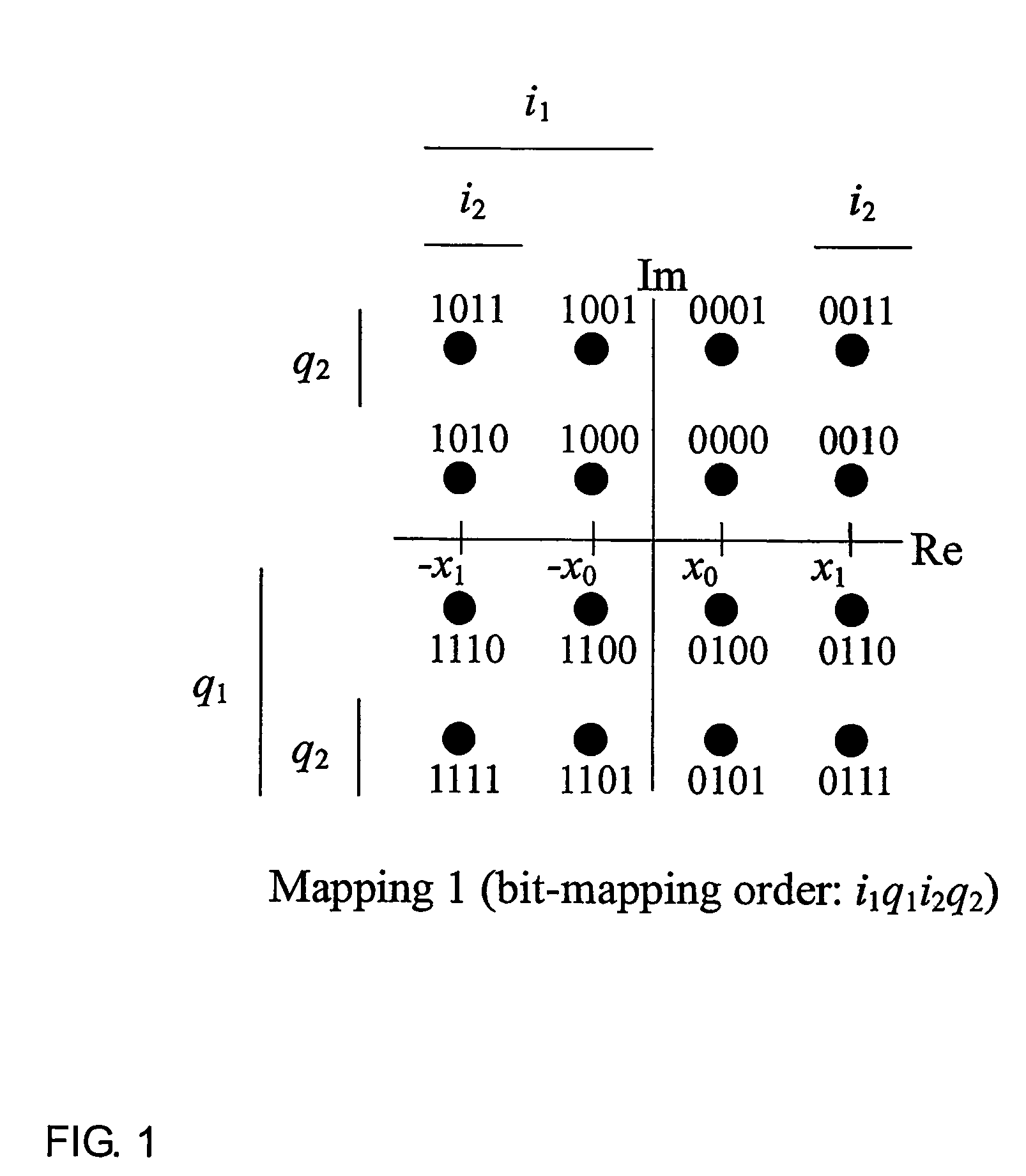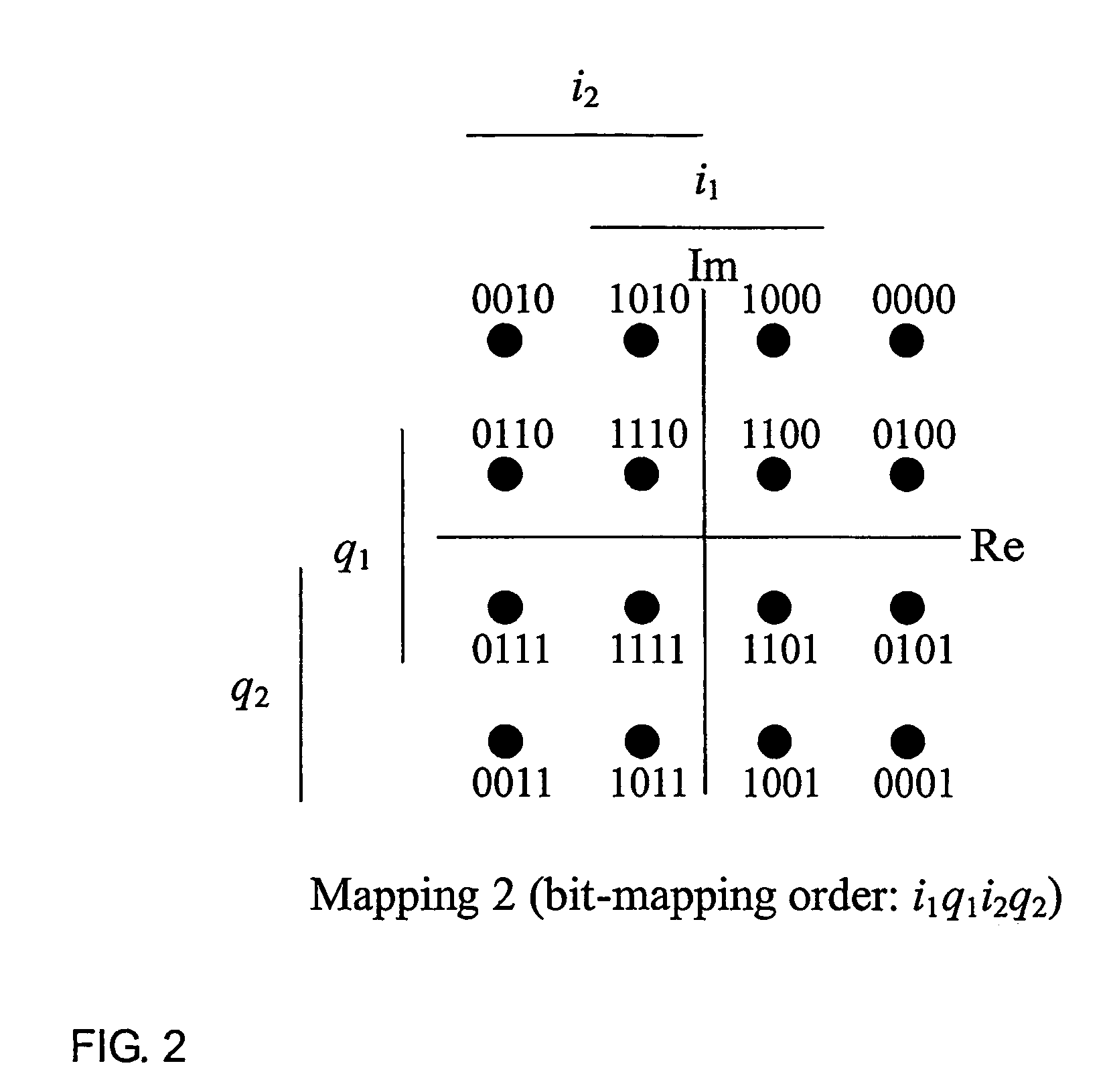Constellation rearrangement for transmit diversity schemes
a diversity scheme and constellation technology, applied in the direction of orthogonal multiplex, multiple modulation transmitter/receiver arrangement, instruments, etc., can solve the problem of inability to achieve perfect averaging, reduce the differences in mean combined bit reliabilities, and improve the decoding performance at the receiver
- Summary
- Abstract
- Description
- Claims
- Application Information
AI Technical Summary
Benefits of technology
Problems solved by technology
Method used
Image
Examples
Embodiment Construction
[0027]The following detailed description is shown for a square 16-QAM with Gray mapping. However, without loss of generality the shown example is extendable to other M-QAM and M-PSK (with log2(M)>2) formats. Moreover, the examples are shown for transmit diversity schemes transmitting an identical bit-sequence on both branches (single redundancy version scheme). Then again, an extension to a transmit diversity scheme transmitting only partly identical bits on the diversity branches can be accomplished. An example for a system using multiple redundancy versions is described in copending EP 01127244, filed on Nov. 16, 2001. Assuming a turbo encoder, the systematic bits can be averaged on a higher level as compared to the parity bits.
[0028]Assuming a transmit diversity scheme with two generated diversity branches, which are distinguishable at the receiver (e.g. by different spreading or scrambling codes in a CDMA system, or other techniques of creating orthogonal branches) and a transmi...
PUM
 Login to View More
Login to View More Abstract
Description
Claims
Application Information
 Login to View More
Login to View More - R&D
- Intellectual Property
- Life Sciences
- Materials
- Tech Scout
- Unparalleled Data Quality
- Higher Quality Content
- 60% Fewer Hallucinations
Browse by: Latest US Patents, China's latest patents, Technical Efficacy Thesaurus, Application Domain, Technology Topic, Popular Technical Reports.
© 2025 PatSnap. All rights reserved.Legal|Privacy policy|Modern Slavery Act Transparency Statement|Sitemap|About US| Contact US: help@patsnap.com



